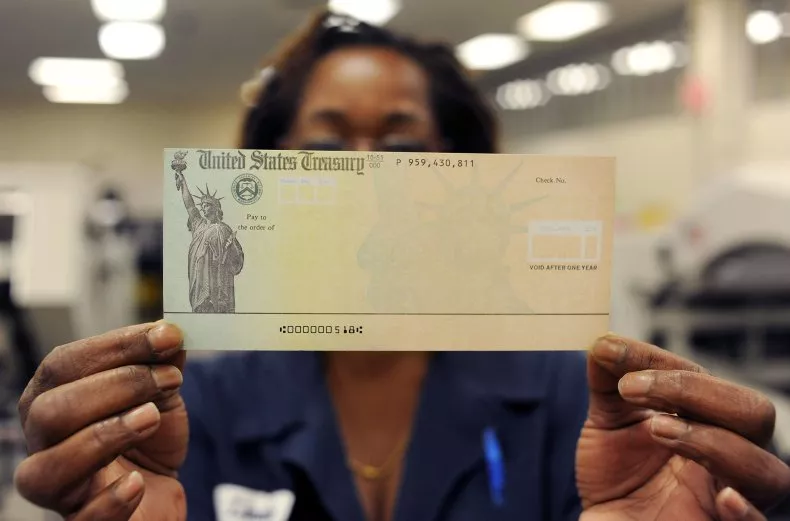Seniors will earn payments of up to $4,873 in less than two weeks.
The new Social Security checks will be boosted by the 2024 cost of living adjustment (COLA), meaning seniors should expect a 3.2 percent increase in monthly benefits.
The highest payment that top earners who retire at 70 can receive is $4,873 on January 10, but the exact date recipients receive benefits will depend on their birthday.
Those who were born between the 1st and 10th of a month get payments on January 10, while those born after that will see checks arrive over the next several weeks.
Those born between the 11th and 20th will see the new payments arrive on the third Wednesday, January 17. Americans born between the 21st and 31st of their birthday month will see the COLA boost in their payments on Wednesday, January 24.
While the COLA will see payments boosted by 3.2 percent, the exact amount individuals see also depends on several factors. That includes the age at which they retire as well as the amount paid into Social Security and for how many years they contributed.
Concerns Over Social Security Payments
While 2024 Social Security payments are not in jeopardy, the Social Security Administration is predicted to run out of money for full payments as early as 2034 as more Americans retire and fewer work to support the program.
About $1.4 trillion in payments are sent to more than 70 million people each year, and more than 8 million people have started receiving benefits over the past decade, the SSA has said.
“For more than 85 years, Social Security has provided income protection for retirees, adults and children with disabilities, and families who lose a wage earner,” Kilolo Kijakazi, the former commissioner of Social Security who served until December 20, 2023, said in a statement last month. “Despite our recent history of chronic underfunding, Social Security remains among the most trusted agencies in the Federal Government.”
Still, this year’s continuing economic turbulence and high inflation on goods and services seniors use most has many weary that the payments won’t be sufficient in 2024.
Last year, the COLA was set at 8.7 percent, reflective of severe inflation on everything from groceries to housing.
“The lower COLA for 2024 implies that the increase in Social Security payments might be insufficient to keep up with the escalating costs of essential goods and services,” Jonathan Rosenfeld, the founder of Rosenfeld Injury Lawyers, which regularly represents seniors, told Newsweek. “Seniors could encounter financial challenges, and the anticipated relief from the COLA might be more limited than what was experienced in the previous year.”
Seniors typically have higher health care and living expenses compared to the general population, meaning the adjustment could easily fall short of their expenses.
And some seniors are living in stark contrast to each other, so each one’s specific expenses and side income will determine how well the COLA benefits them, according to Jonathan Price, a national retirement practice leader at employee benefits consulting firm Segal.
“Whether the annual COLA is appropriate for a specific retiree to ensure equal purchasing power as the prior year is highly specific to the life situation of the individual retiree both in terms of expenses and other sources of income,” Price told Newsweek.
For those who rely solely on Social Security as their only income source in retirement, the boosted benefits are likely to be limited support, Jake Hill, the CEO of DebtHammer Relief, added.
“Even those who have access to other income in retirement will likely find that their 2024 COLA doesn’t significantly improve their financial situation,” Hill told Newsweek.

